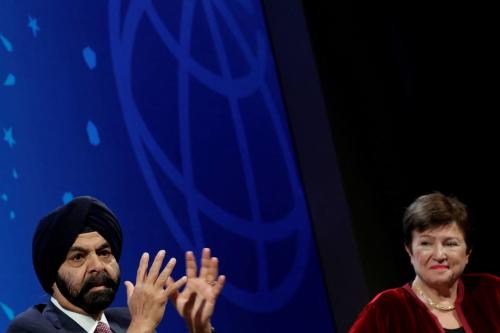The transparency and accountability has been mentioned repeatedly. Here, a lot has already taken place in terms of adopting the same standards of the World Bank and the European Bank for Reconstruction and Development (EBRD). But everyone agrees, including the IDB’s management, that it is time to focus not on what can be disclosed, but rather to set a policy in which the practice is to disclose and publish as a general rule, with a list of exceptions that are agreed by its board. This is a simple but powerful rule that the IDB’s Board of Executive Directors should embrace soon.
There are other aspects related to the focus of its operations. The IDB should continue to promote investment projects that have substantial technical support and clear conceptualization. In addition, during the implementation stages projects have to be rigorously evaluated and the results widely disseminated, even if governments oppose to disclosing this information.
In addition to investments that help reduce inequality and poverty, the IDB has to give priority to areas of great concern, such as climate change adaptation and mitigation. Changes in land use have been a large source of greenhouse gas emissions in the region. This needs to change and resources are need to help governments comply with their own targets. The U.S. administration wants to promote an Energy and Climate Partnership, with specific goals such as the development of clean technologies, including the production of renewable energies, throughout Latin America. Funding such programs as well as greater energy integration in the region should be a top priority.
Moreover, a stronger bank will play the leading role in the reconstruction of Haiti by providing $200 million dollars a year in grants for the next decade. This is the most decisive action countries can take to speed up the development of Haiti.
Unfortunately, these new initiatives will not be feasible if the institution is constrained by its lack of capital. The IDB should get $100 billion in new capital. Of that, countries will only have to pay between 4 and 5 percent. As the U.S. holds 30 percent of the shares, this means that the U.S. Treasury will only have to disburse between $1.2 and 1.5 billion throughout the next five years. It seems that investing $300 million per year on an institution, which will help preserve growth and stability in a region of strategic interest for the U.S., is the sensible thing to do.



Commentary
Cancun: A Decisive Meeting for the Inter-American Development Bank
March 20, 2010